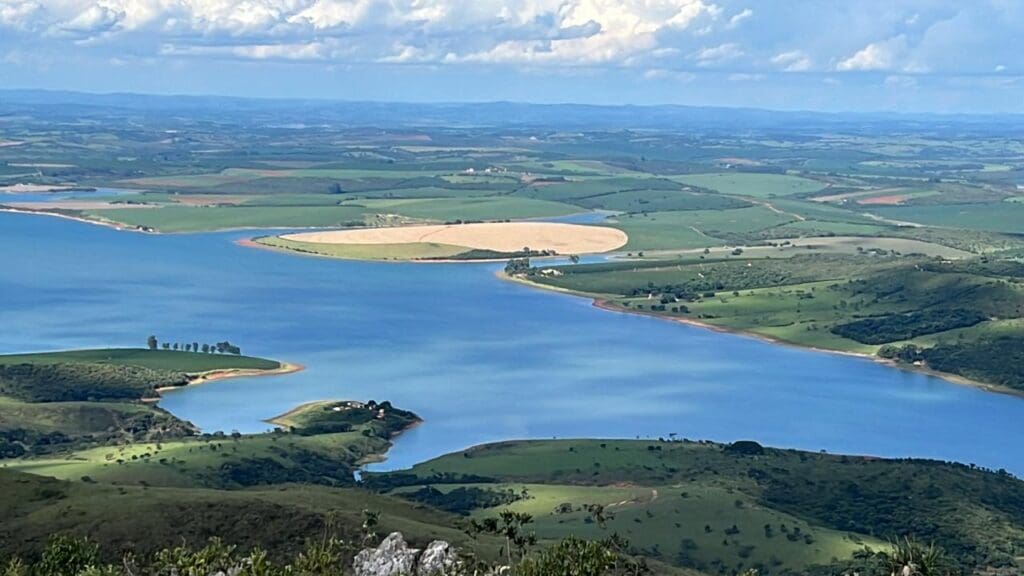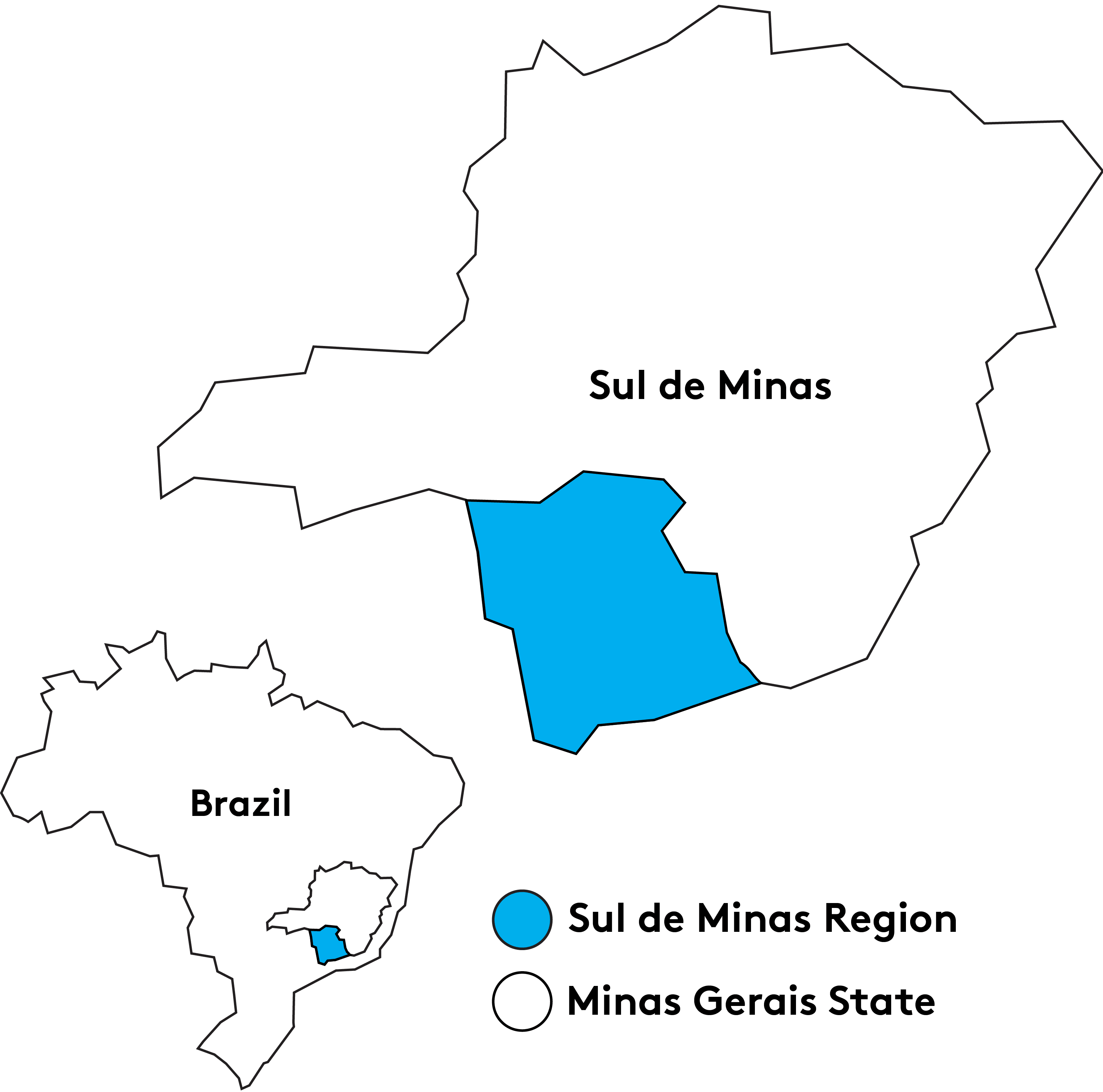The Boa Vista Farm, located in Guapé, Minas Gerais, began its coffee-growing journey in 2019 through the agronomist and owner Rafael Naves de Figueiredo. Passionate about the land since childhood, Rafael grew up on the traditional “Fazenda do Gordura” in Santana da Vargem, MG, closely following his grandfather’s work in coffee production.
In 2009, Rafael enrolled in the agronomy program in Alfenas, MG, and graduated in 2012. For ten years, he worked with organomineral fertilizers in Brazil’s main coffee-producing regions. Through his wife, Marianna, he discovered the unique Serra Nova region, located between the municipalities of Guapé and Ilicínea, MG.
Rafael fell in love with the region’s distinctive characteristics: high-altitude plateaus with excellent mechanization potential blending seamlessly with stunning mountains and breathtaking views of the Furnas Lake, from which eleven neighboring cities can be seen. Today, Rafael and Marianna manage their properties, leveraging the region’s favorable climate to produce exceptionally high-quality coffee. They maximize sustainable and balanced agronomic practices, ensure harvesting at the optimal time, and use drying methods that include patios and static dryers with controlled temperatures. They also prioritize the well-being of their employees and their families.
Read more about coffee varieties of Brazil on our blog.











